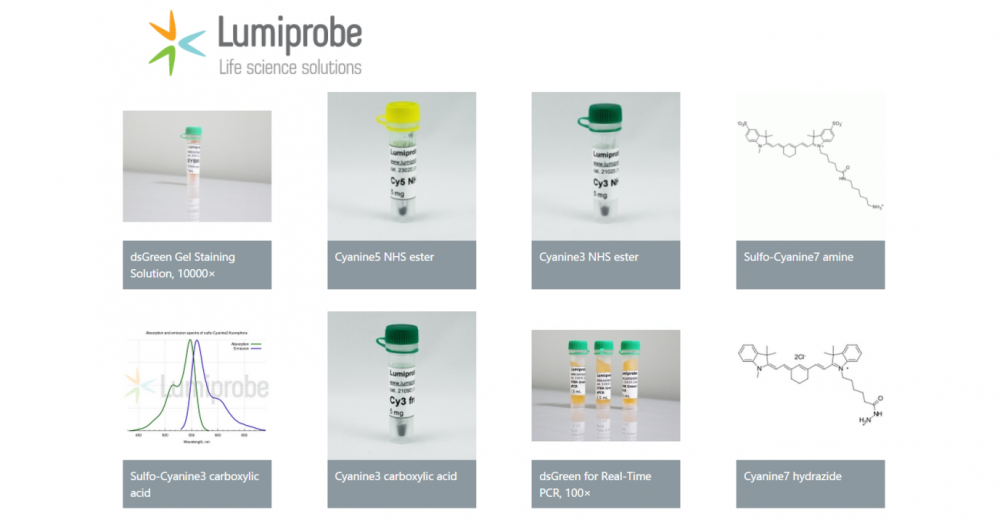Reaction of thiols with maleimides is a process which is widely used for bioconjugation and labeling of biomolecules including proteins and peptides. It proceeds according to the following scheme:
Maleimides are electrophilic compounds which show high selectivity towards thiols. While maleimides hardly ever occur in nature, thiols are very abundant. They are encountered in proteins and peptides as cysteine residues. Although natural DNA does not contain thiols, synthetic oligonucleotides with thiol groups can be easily prepared.
Thiols are prone to oxidative dimerization with the formation of disulfide bonds. Cysteine residues thus form cystine bridges, which stabilize protein tertiary structures. Disulfides do not react with maleimides. Therefore, it is necessary to reduce disulfides prior to the conjugation, and to exclude oxygen from the reaction.
Conjugation protocol depends on the solubility of the starting components. For compounds with low aqueous solubility, like most fluorescent dye maleimides, use of organic co-solvent, such as DMSO or DMF, is essential.
We recommend the following protocol for the conjugation of Lumiprobe dye maleimides with proteins, peptides, and other thiolated biomolecules.
- Dissolve the protein or other molecule containing thiol to be labeled in degassed buffer (PBS, Tris, HEPES are good, although others buffers containing no thiols can be used) at pH 7-7.5 in plastic vial. Buffer can be degassed by applying vacuum on it for several minutes, or by bubbling through inert gas (nitrogen, argon, or helium). For proteins, good concentration is between 1-10 mg/mL.
- Add an excess of TCEP (tris-carboxyethylphosphine) reagent to reduce disulfide bonds, flush with inert gas, and close. 100x molar excess of TCEP is fine. Keep the mixture for 20 minutes at room temperature.
- Dissolve maleimide in DMSO or fresh DMF (1-10 mg in 100 uL).
- Add dye solution to thiol solution (20x fold excess of dye), flush vial with inert gas, and close tightly.
- Mix thoroughly, and keep overnight at room temperature, or 4 Celsius.
- Purify by gel filteration, HPLC, FPLC, or electrophoresis.
For maleimides with poor aqueous solubility, like most dye maleimides, we recommend use of co-solvent (DMF or DMSO). Maleimides with good aqueous solubility (like sulfo-Cy maleimides) can be dissolved in water. If precipitation occurs, increase content of organic co-solvent in the mixture to achieve better labeling.
Dialysis is recommended as a means of purification only for maleimides with good aqueous solubility.

